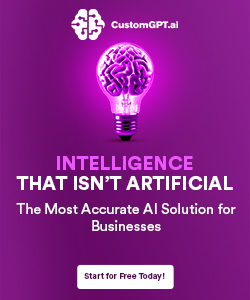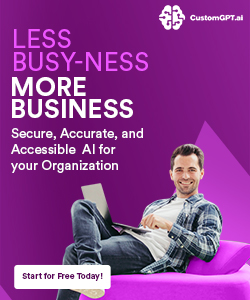There’s no denying that artificial intelligence (AI) has the potential to transform your world in remarkable ways, offering both incredible opportunities and significant challenges. As you probe into its complexities, you’ll need to understand how to harness its capabilities while safeguarding against its risks. This blog post aims to equip you with the knowledge to navigate the dual nature of AI, helping you appreciate its benefits while also being aware of the potential pitfalls that can arise from its misuse or overreliance.

Understanding AI: Definitions and Applications
Before exploring the dual nature of AI, it’s imperative to define what it is and how it is currently applied. Artificial Intelligence refers to the simulation of human intelligence in machines, enabling them to perform tasks that typically require cognitive functions. From natural language processing to machine learning, AI can enhance productivity and efficiency across multiple domains, paving the way for innovations that change how you interact with technology.
Overview of Artificial Intelligence
Below is a broad overview of AI, highlighting its significance in the modern technological landscape. At its core, AI encompasses various technologies that allow machines to learn, reason, and make decisions. By mimicking human thought processes, these systems can interpret data, recognize patterns, and solve complex problems, thereby providing you with enhanced tools and solutions for various tasks.
Current Use Cases Across Industries
Understanding the different ways AI is currently employed across various industries can illuminate its versatility and impact. From healthcare to finance, AI applications streamline processes, enhance decision-making, and improve customer experience. For instance, in healthcare, AI can analyze medical data for faster diagnosis, while in retail, it personalizes shopping experiences based on consumer behavior.
Current use cases of AI span multiple sectors, showcasing its transformative potential. In logistics, AI optimizes supply chain management, reducing costs and increasing efficiency. The automotive industry is leveraging AI for self-driving technology, enhancing safety and convenience. Furthermore, financial institutions use AI algorithms for fraud detection and risk management, while agricultural enterprises apply AI-driven analytics to improve crop yields. These applications illustrate how AI can drive innovation and productivity, impacting your daily life in various ways.
The Promises of AI
Now more than ever, AI is transforming various sectors, offering unprecedented benefits and opportunities. From smarter automation to enhanced decision-making processes, these innovations pave the way for a future that redefines what’s achievable. As you explore the vast landscape of AI, you’ll discover its ability to not only improve existing systems but also create entirely new avenues of growth and success.
Enhancements in Efficiency and Productivity
Beside improving workflows, AI streamlines operations by automating routine tasks and analyzing data at lightning speed, allowing you to focus on strategic initiatives. With AI-driven tools, you can expect optimized resource allocation, reduced operational costs, and significantly enhanced performance.
Innovations in Healthcare and Research
To address pressing health challenges, AI technologies are reshaping medical diagnostics, treatment personalization, and drug discovery. By leveraging advanced algorithms and large datasets, you unlock new pathways for improving patient outcomes and accelerating research breakthroughs.
And as research continues, AI’s ability to mine vast amounts of data enables healthcare professionals to identify patterns and correlations that were previously undetectable. Imagine being able to predict patient outcomes more accurately or discovering new treatment methods in a fraction of the time. This will not only elevate the standards of care you receive but could also lead to life-saving innovations that profoundly impact lives. The potential for advancements in healthcare through AI is both expansive and exciting.
The Perils of AI
There’s no doubt that while AI offers transformative potential, it also harbors significant dangers. As you explore its integration into various facets of life, it becomes evident that unchecked developments can lead to unintended consequences, including ethical dilemmas, social inequality, and job disruption. Understanding these challenges is vital for navigating the future of AI responsibly.
Ethical Concerns and Bias
One of the most pressing issues surrounding AI is the inherent biases that can be embedded within algorithms. As you deploy these systems, it’s critical to consider that they often reflect their creators’ prejudices, leading to unfair outcomes in areas like hiring, law enforcement, and lending. Ensuring transparency and inclusivity in AI design is imperative for fostering a fair digital future.
Job Displacement and Economic Impact
Around the globe, AI is reshaping industries and has the potential to displace large segments of the workforce. As you observe automation rising in various sectors, it raises important questions about the future of employment and economic stability. While some jobs may become obsolete, new roles will emerge, necessitating a shift in skills and retraining for those affected.
Also, the economic impact of job displacement is far-reaching. As you adapt to the changing landscape, it’s vital to consider how automation affects your industry and local economy. The shift may exacerbate income inequality, as those with advanced skills in AI and tech thrive, while others struggle to find new opportunities. Being proactive through continuous learning and adapting to technological advancements will not only benefit you but also contribute positively to the wider community’s resilience in this evolving job market.
Balancing Risks and Rewards
All advancements in AI come with a spectrum of risks and rewards. You must navigate this intricate landscape, ensuring that the benefits of AI innovation do not come at an unintended cost. By leveraging AI responsibly, you can harness its potential to improve efficiency and creativity while remaining vigilant about the ethical implications and societal impacts that may arise. Finding this balance is vital to fostering a sustainable future where AI enhances human capability without compromising safety and values.
Strategies for Responsible AI Development
Above all, you should adopt strategies that prioritize ethical considerations throughout the AI development process. This includes incorporating diverse perspectives during design, ensuring transparency in algorithms, and continuously monitoring AI systems for bias and unintended consequences. Engaging stakeholders, including ethicists and community representatives, can help you address concerns proactively and build trust in your AI-driven initiatives.
The Role of Regulation and Governance
Rewards of effective regulation and governance can significantly shape the responsible use of AI technologies. You should understand that clear and consistent guidelines can mitigate risks, ensuring that AI systems operate within ethical and legal boundaries. Robust governance structures offer an avenue for accountability, allowing you and other stakeholders to make informed decisions that prioritize public safety and welfare.
Indeed, incorporating regulation and governance into AI practices fosters an environment where innovation can thrive while maintaining ethical standards. By promoting transparency and accountability, regulatory frameworks empower you to address potential biases, privacy concerns, and security threats. Engaging with policymakers and industry leaders will help you shape regulations that not only protect individuals and communities but also encourage the responsible development of cutting-edge technologies, ultimately benefiting everyone involved.
Future Prospects of AI
Unlike any technology before it, AI has the potential to revolutionize various aspects of your life, from healthcare to transportation. As advancements continue, you may find yourself adapting to smarter systems that not only enhance your efficiency but also spark ethical debates around surveillance, privacy, and job displacement. As you navigate this changing landscape, it becomes clear that while the promises of AI are vast, so are the responsibilities that come with it.
Emerging Technologies and Trends
Prospects for AI are bright as emerging technologies, such as quantum computing and enhanced machine learning algorithms, pave the way for unprecedented capabilities. You can expect innovations that enable real-time data analysis and more personalized user experiences, fundamentally altering how you interact with technology and improving decision-making processes.
Potential Long-term Implications for Society
Before begining on an AI-enhanced future, it’s crucial to consider its potential long-term implications for society. As AI becomes integrated into various sectors, it may reshape job markets, raise ethical dilemmas, and influence social structures, prompting you to think critically about the role of technology in your everyday life.
Even as you embrace the advancements that AI promises, it’s important to contemplate the societal changes that accompany this technology. You might witness shifts in employment dynamics, with certain jobs becoming obsolete while new opportunities arise. The ethical implications of AI decision-making also demand your attention, as you navigate questions surrounding bias, accountability, and ethical frameworks governing these systems. Your understanding of these factors will ultimately shape how AI influences your future and the world around you.
Case Studies: AI Successes and Failures
Many examples of AI implementation illustrate its dual nature, showcasing both remarkable achievements and notable setbacks. Consider these case studies that underline the spectrum of AI outcomes:
- IBM Watson’s success in oncology diagnostics achieved a 96% accuracy rate in tumor identification.
- Amazon’s Alexa revolutionized the smart home market, boasting over 100 million devices sold.
- Theranos’ failure in blood testing technology resulted in a $9 billion loss for investors and legal ramifications.
- Facebook’s targeted advertising algorithm increased engagement by 30% but faced backlash due to privacy concerns.
Notable Success Stories
Success stories in AI are plentiful, demonstrating how technology can transform industries and improve lives. For instance, AI algorithms in healthcare have significantly enhanced diagnostic accuracy, leading to earlier disease detection and improved patient outcomes. Furthermore, companies like Google have utilized AI to enhance search algorithms, resulting in increased user satisfaction and engagement.
Lessons Learned from Failures
Beside successes, failures provide important insights into AI’s limitations and risks. High-profile missteps in AI projects remind you of the necessity for ethical considerations and oversight in implementation.
From these failures, you can glean vital lessons, such as the importance of transparency in algorithmic decision-making and the need for continual monitoring and adjustment of AI systems. Notably, understanding bias in data sets helps mitigate negative outcomes. Moreover, recognizing the potential societal implications, such as job displacement and privacy concerns, can guide you in pursuing a more responsible approach to AI development and deployment.
To wrap up
Conclusively, as you navigate the landscape of artificial intelligence, it’s vital to understand that its benefits and risks are intertwined. You must weigh the promises of increased efficiency and innovation against the potential pitfalls of ethical dilemmas and job displacement. By staying informed and proactive, you can harness AI’s capabilities while mitigating its challenges, ultimately empowering yourself and your community to thrive in this evolving technology landscape.
FAQ
Q: What are the main benefits of using AI in various industries?
A: AI offers numerous advantages across different sectors. In healthcare, AI can analyze vast amounts of patient data to assist in diagnostics and personalize treatment plans. In finance, AI enhances fraud detection and streamlines customer service through chatbots. Additionally, in manufacturing, AI-driven automation can increase efficiency and reduce costs. Overall, the integration of AI can lead to higher productivity, improved decision-making, and innovative solutions to complex problems.
Q: What are some of the risks associated with the development and deployment of AI?
A: While AI presents exciting opportunities, it also brings significant risks. One concern is the potential for job displacement as automation may outperform human capabilities in specific tasks. There’s also the risk of biased algorithms if the data used is not representative, leading to unfair treatment in areas such as hiring or law enforcement. Moreover, the misuse of AI in creating deepfakes or surveillance raises ethical questions about privacy and societal implications. It is vital to navigate these challenges responsibly to maximize AI’s benefits while minimizing its drawbacks.
Q: How can individuals and organizations mitigate the potential negative impacts of AI?
A: To address the risks associated with AI, individuals and organizations can take several proactive measures. First, fostering a culture of continuous learning and adaptability is imperative to help the workforce transition into new roles that AI cannot fulfill. Secondly, promoting transparency in AI development and decision-making processes can help mitigate biases and ensure ethical standards are upheld. Lastly, engaging in policy discussions around AI regulation will support a balanced approach to innovation while protecting public interests. By prioritizing responsible practices, stakeholders can navigate the complexities of AI effectively.










